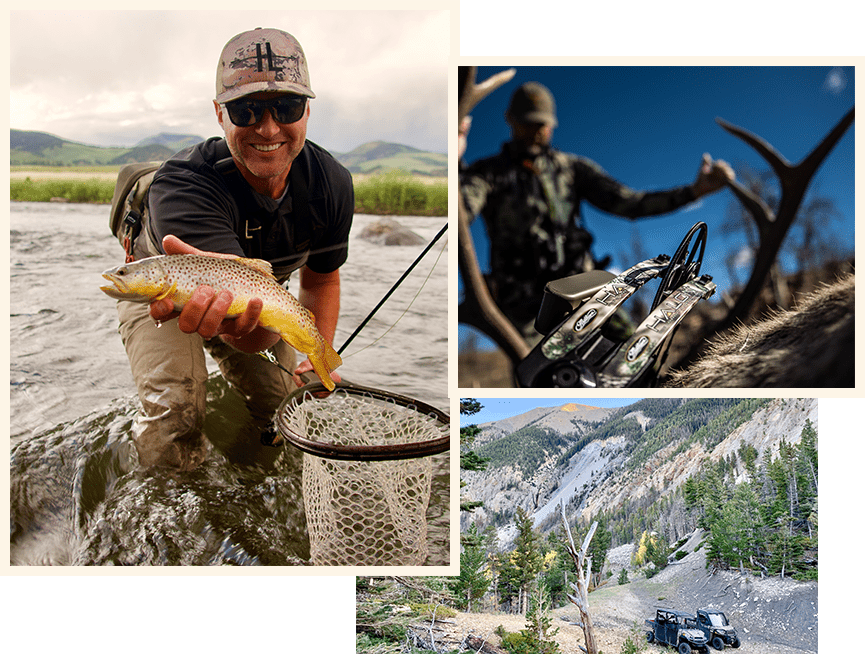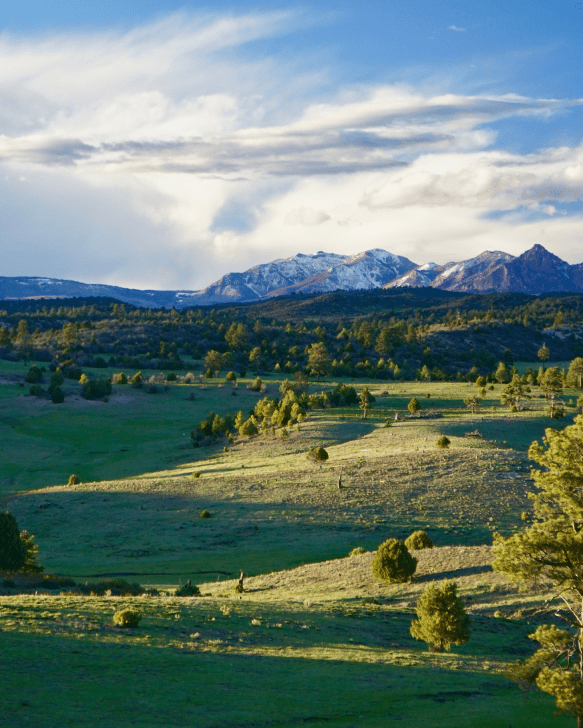Whipping the Wind – Flyfishing Ranch For Sale
When flyfishers sit around the campfire and commiserate about the most frustrating aspects of their sport, sooner or later talk turns to the nemesis of the wind. What flycaster hasn’t honed a perfect loop in calm conditions in the city park, only to be totally frustrated in an actual fishing situation when a healthy breeze springs up and turns their lovely arrow-straight cast into a pile of cooked spaghetti? More than one fishing trip has been transformed into an ordeal, of not completely foiled, by a wind with a mind of its own. Casting in the wind, though, doesn’t have to be an exercise in frustration. Good equipment, proper technique and a few tricks can keep the practiced angler going as strong as the wind that is in his face.
Generally, a faster, “stiffer” rod will perform better in the wind than a rod with slower action. Wind exerts a fair amount of force on the rod itself, and a stiffer rod slices against the resistance with greater ease. Would you rather cut a stick of butter with a knife or with a feather?
Line weight can also make a difference in the wind. Two schools of thought prevail. First, some prefer using heavier line weights to punch into the wind with more weight. Others recognize that heavier lines also have more wind resistance, though, so they fish with lighter lines that cut through the wind with less resistance. Try both techniques and see which works for you.
Leaders can make or break wind casting. Under windy conditions, shortening a leader one or two feet can make a huge difference between putting the fly close to your target or somewhere on the bank. The downsides of a “harder” landing of the fly and increased chances of drag with a shorter leader are more than offset by having the fly land in the general vicinity of where you want it to be!
Even your choice of fly can make a difference in the wind. When a gale springs up, attempting to cast a bulky Stimulator will be more frustrating than a streamlined fly like a Comparadun, or just about any nymph.
As valuable as equipment adjustments are, nothing can substitute for good technique when casting in the wind. Tight loops are more aerodynamic than open loops, and are less likely to be thrown all over creation. Solid tight loop casting technique learned on calm days will prove invaluable on the blustery days.
Wind that comes directly at an angler’s back may be the easiest to deal with. A strong backcast is necessary, but the forward cast can be more relaxed, allowing the wind to take the line to its target. With a backwind, too much power on the forward cast, though, can cause the line to smack the water like a kid with a canoe paddle.
When the wind is from the side, dropping to a sidearm cast will help your line cut under the wind and make things easier. Also, take a tip from golfers and learn to play the wind, adjusting your target area upwind to compensate for the inevitable misdirection that the breeze will contribute.
Headwind casting may be the flyfisher’s worst nightmare. Even a stiff headwind, though, can be managed through good technique. The best approach is to adjust to a “high backcast, low frontcast” approach. Raise your casting elbow high, then make your backcast, stopping the rod at no more than the 12 o’clock position (or even slightly before it gets to the vertical position). Stop it quickly, make a good tight loop and drive the rod down to the 9 o’clock position. In a strong headwind, it will thus feel like you’re casting more “up and down” rather than “back and forth,” and you should have the impression that your backcast is going straight up.
With the “high backcast, low frontcast” technique, your fly will occasionally touch the water on the forward false casts. Don’t worry about this. Your other option is not getting the fly in front of you at all! Headwind casting isn’t exactly graceful, but remember, there’s nothing graceful about a forty-mile-per-hour wind in the first place!
So the next time you think it’s too windy to go flyfishing, think again. Remember that the fish don’t care how windy it is, and they still have to eat. With a few equipment and technique adjustments you’ll soon learn that there’s more you can do in the wind than fly kites!


